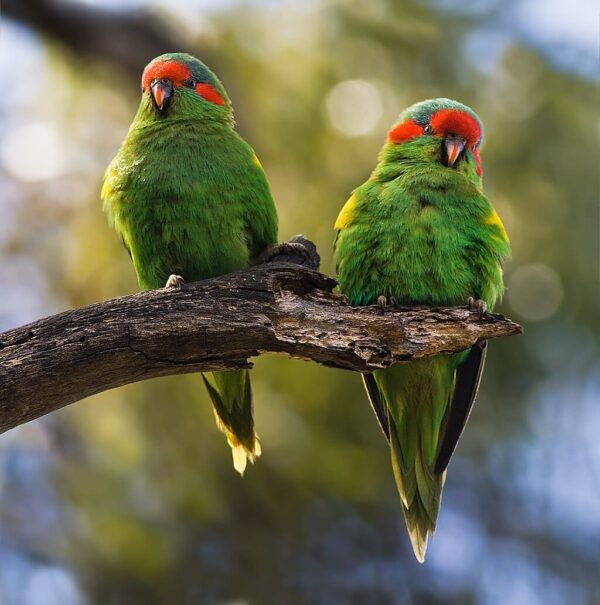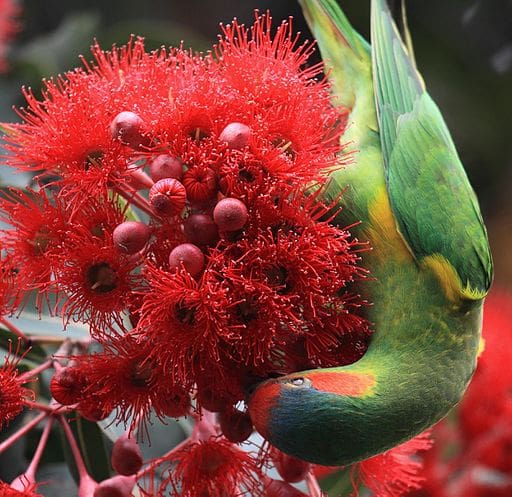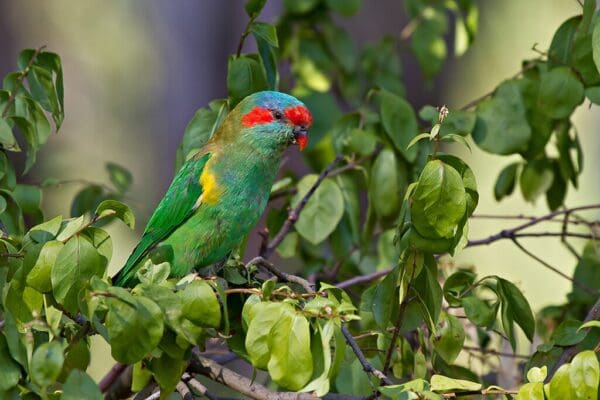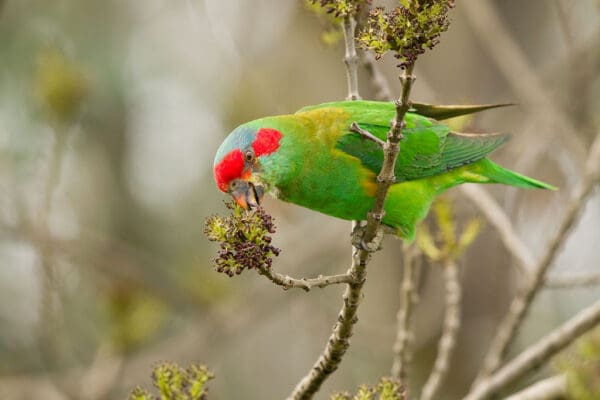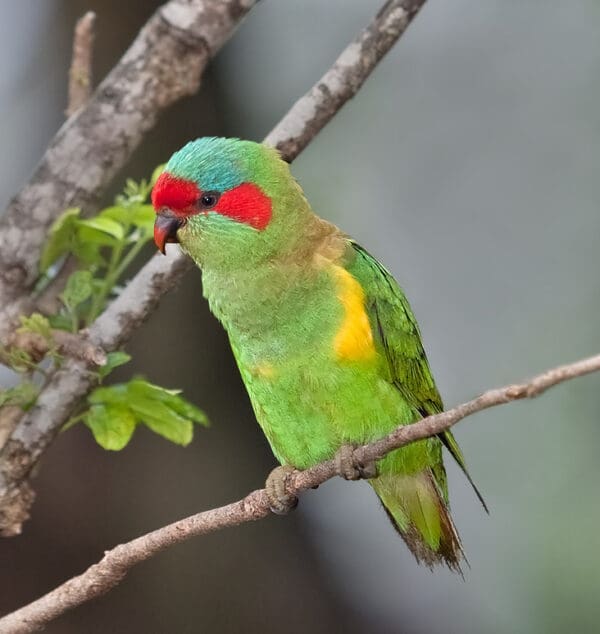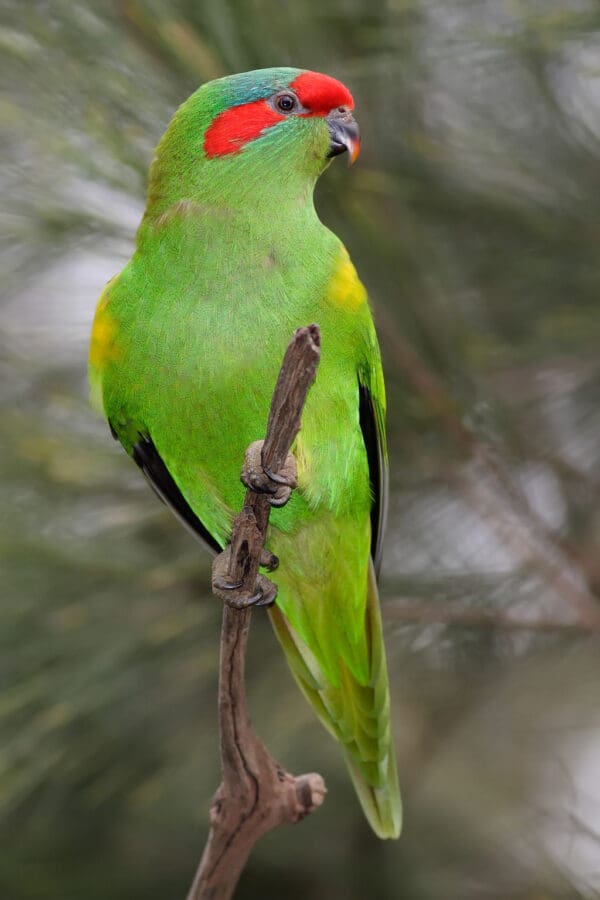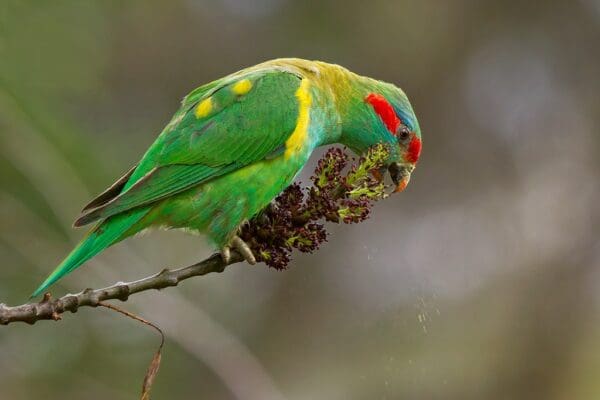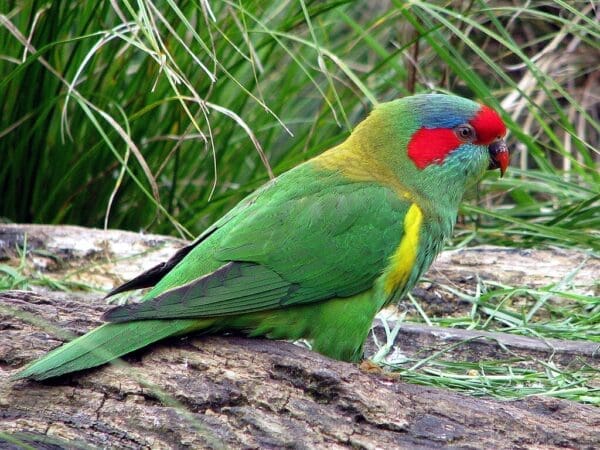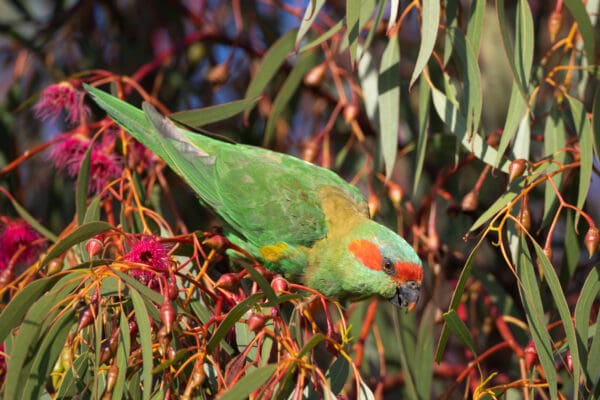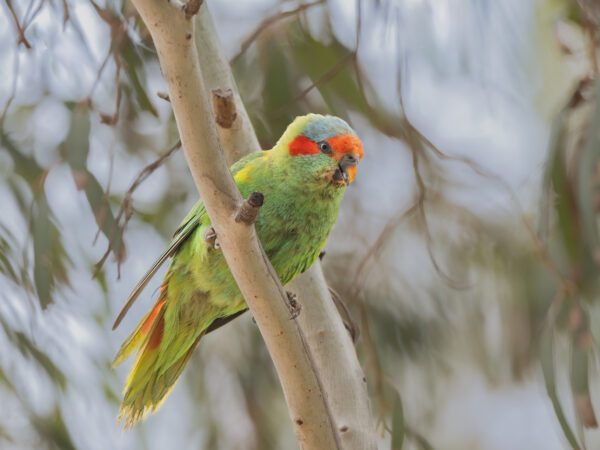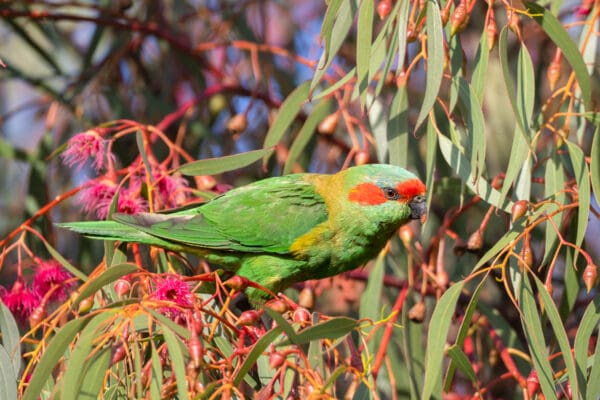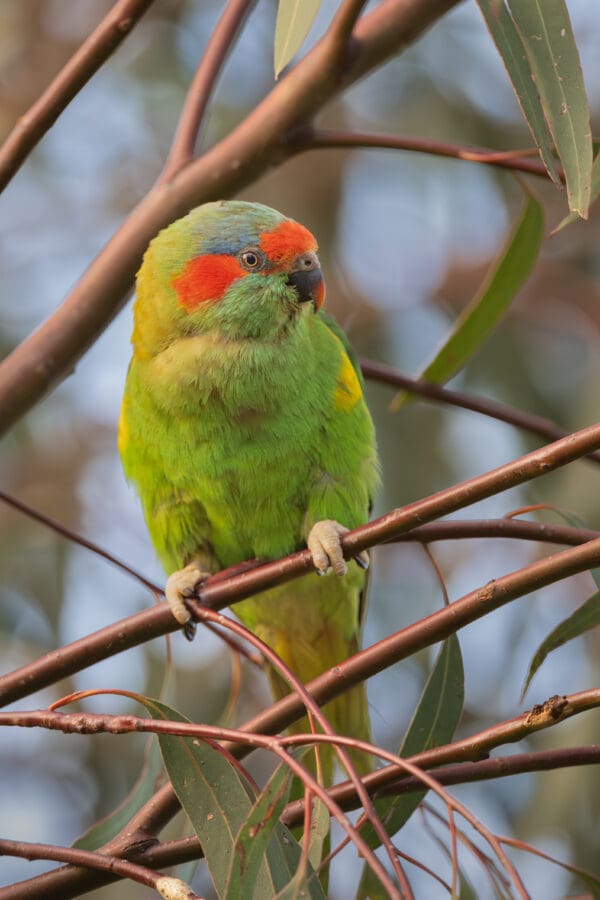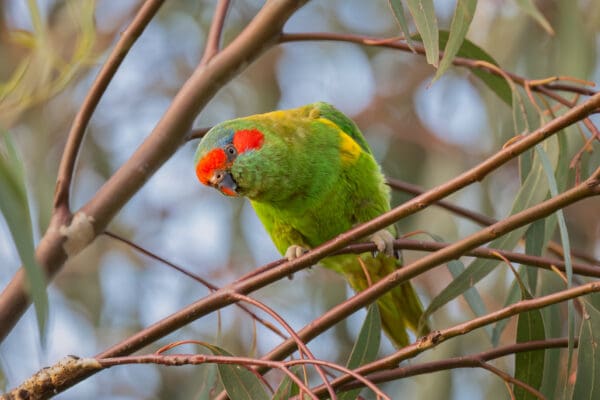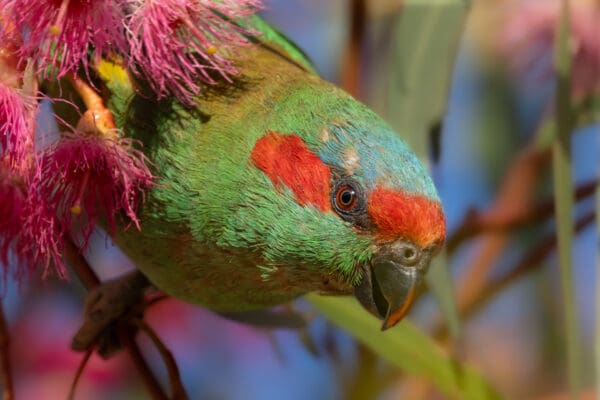Musk Lorikeet
Also known as:
Musky Lorikeet, Musk Lory, Green Keet, Keet, Green Leek, Red-crowned Lorikeet, Red-eared Lorikeet, Red-cheeked Lorikeet, Red-cheek, King Parrot
Also known as:
Musky Lorikeet, Musk Lory, Green Keet, Keet, Green Leek, Red-crowned Lorikeet, Red-eared Lorikeet, Red-cheeked Lorikeet, Red-cheek, King Parrot
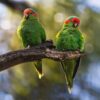
![© Christopher Watson [CC BY-SA 3.0] via Wikimedia Commons A wild Musk Lorikeet takes nectar from blossoms](https://parrots.org/wp-content/uploads/2023/01/wpt_Musk-Lorikeet_1136-12-100x100.jpg)
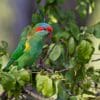
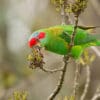

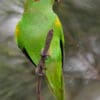

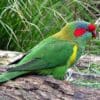
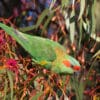
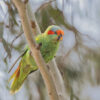
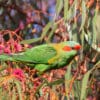
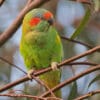
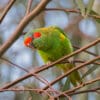
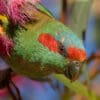
DID YOU KNOW?
This species’ name comes from the musky scent that the birds emit.

Glossopsitta

concinna
Size:
22 cm (8.6 in)
Weight:
60-90 g (2.1-3.1 oz)
Subspecies including nominate:
Two barely differentiated subspecies: G.c.concinna, G.c. didimus
Colour Adult:
G.c. concinna: Both adults red forehead and eye stripe; blue crown which is duller in female; mantle bronze/brown; sides of breast yellow. Beak red with black at base. Eye orange.
G.c. didimus: Both adults less blue on crown, nearly absent in female.
Colour Juvenile:
G.c. concinna: Duller red and yellow patches. Beak brown. Eye brown.
G.c. didimus: Almost no blue on crown.
Call:
Said to be loud, a rolling metallic screech. Also chattering while feeding.
More Information:
Content Sources:
CITES
BirdLife International
Cornell Lab of Ornithology/Birds of the World
Article “Musk Lorikeets,” by Kellie Stewart
A Guide to Parrots of the World, Juniper and Parr, 1998.
Parrots of the World, Forshaw and Cooper, 1977.
Parrots of the World, Forshaw, 2006. 2010 edition
Parrots in Aviculture, Low, 1992.
Captive Status:
Rare outside Australia, small number in US and UK aviaries.
Longevity:
15-25 yrs
Housing:
Enclosure with drain in floor, or suspended cage over tiled or concrete floor.
Diet:
Nectar – a commercial type specially formulated for small species or a mix of baby cereal (lactose-free) and honey, malt extract or molasses, mixed with filtered water, made fresh once or twice daily, making up at least 40 percent of the diet; vegetables and fruit especially apple, pear, orange, cactus fruits and bananas, and one or more daily of: carrot, fresh corn, green leaves; plus dried figs soaked in water for a few hours, spray millet and a small amount of soaked or sprouted sunflower seed and small amount of canary seed.
Enrichment:
Loves baths so provide overhead misters or shallow water bowls ; noise makers, bird safe chew toys (fir, pine, willow or elder branches, heat sterilized pine cones, vegetable tanned leather lacing and shapes), non-destructibles in bird safe plastic (marbella, acrylic, non-pvc plastic).
Nest Box Size:
20 x 20 x 40 cm (7.8 x 7.8 x 15.6 in) vertical box.
Clutch Size:
2
Fledging Age:
7 weeks
Hatch Weight:
—
Peak Weight:
—
Weaning Weight:
—
World Population:
Unknown; described as very common. Stable.
IUCN Red List Status:
Least Concern
CITES Listing:
Appendix II
Threat Summary:
Not globally threatened. Very common throughout its mainland Australian range except in the alpine region. Is likely threatened by climate change.
Range:
G.c. concinna: SE Australia from SE Queensland to SE South Australia, including Kangaroo Island.
G.c. didimus: Tasmania, sometimes King Island. Small feral population in Perth.
Habitat:
Occurs in many areas from open forest to woodland, cultivated and suburban areas, Eucalyptus forest, dry forest, rainforest and riverine woodland. Avoids tall open forest. Up to 1600 m (5248 ft).
Wild Diet:
Diet includes nectar, pollen, blossoms, especially eucalypts; small fruits, seeds, young shoots and buds of Callistemon citrinus, Grevillea robusta and Angophora and occasionally insects. May take sorghum crops.
Ecology and Behaviour:
Nomadic according to season; relies heavily on flowering Eucalyptus species, may be encountered in large flocks of a hundred or more individuals. Pairs strongly bond. May also socialize with other Glossopsitta lorikeets and Swift Parrots (Lathamus discolor).
Clutch and Egg Size:
2 rounded eggs, 24.5 x 20.0 mm (1 x 0.8 in).
Breeding Season:
August-January; nest is in hollow limb or tree cavity.
